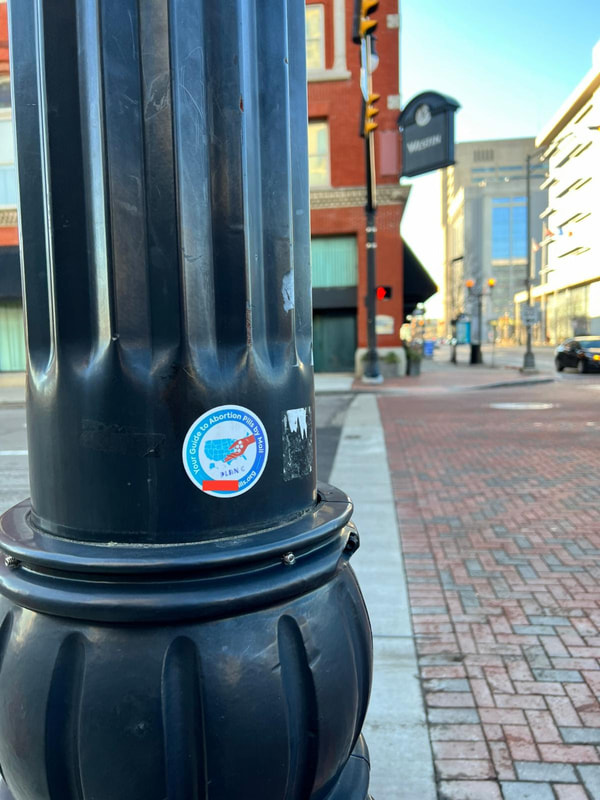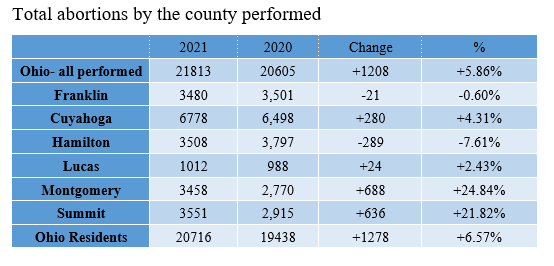Nearly 100 Botched Medical Abortions Reported in 2022
A Greater Columbus Right to Life review of RU486 adverse effects documentation revealed that about 100 Ohio women reported significant adverse effects to their medical abortion provider in 2022. Ohio law (RC 2912.123) requires that complications like incomplete abortion, hospitalization, severe bleeding, failed abortion, or needing a blood transfusion are reported to the Ohio Medical Board by the physician that prescribed the abortion pill if he or she is aware of the complication. Those reports, which do not provide any identifying patient information, are available for review. About 100 reports have so far been submitted to the Ohio Medical Board for abortions that happened in 2022.
This number is likely smaller than the actual number of women who were harmed by the abortion pill due to underreporting or seeking care at an emergency room, urgent care, or with a different physician.
Only the providing physician is required to report RU-486 events to the Ohio Medical Board, and Ohio Hospitals are not only exempt, but they are generally exempt from reporting most abortion complications to the Ohio Department of Health under other sections of Ohio law.
The number is also likely to be artificially low for two other reasons. There is not a definite timeline for reporting complications, and in most instances there is significant lag between the time that the event happened and the report is sent to the Medical Board. For example, more than 15 reports were provided to the OMB four or more months after the incident, and numerous times the report was filed more than seven months later.
We believe that there is also significant underreporting happening by clinics that are simply not complying with Ohio law. Although Ohio has nine abortion clinics, three of which provide abortion-pills only, only seven clinics reported any adverse effects in 2022. Northeast Ohio Women’s Center, which is probably the state’s largest provider of the abortion pill, only reported one event at its Summit County location. It reported zero events at its Cuyahoga County location and zero events at what it describes as a “sister facility” in Toledo (the Toledo Women’s Center). These facilities are connected to one of Ohio’s most notorious abortion provider, Burkons, who has faced license suspension in the past and whose clinic is still under investigation after fetal remains and patient information were found in a trash can.
The number reported by abortion facility (so far) is:
Northeast Ohio Women’s Center: 1
Preterm: 12
Planned Parenthood, Cleveland: 12
Planned Parenthood, Columbus: 5
Planned Parenthood, Cincinnati: 31
Women’s Med of Dayton: 31
Your Choice Columbus: 6
Among the adverse events reported, by far the most common reported complication was an incomplete or failed medical abortion.
Several patients reported significant bleeding (requiring medical intervention) or being taken to the emergency room. At least two patients were listed as having failed abortions because their pregnancy was ectopic. One had no additional notes and the other was noted as being sent to the emergency room. This means that in at least two cases the pregnancy was not verified as intrauterine before being given the abortion pills (which cost about $800 on several OH websites).
In the providers’ own words:
“Patient presented with retained IUP. Underwent uncomplicated D&C.”
“Ongoing heaving bleeding after medication abortion. Treated with suction D&C.”
“MAB procedure was initiated per FDA regimen on 5/23/22. Pt. called 5/27/22 to report little to no bleeding. US performed 5/31/22 revealed definite ectopic pregnancy. Pt. referred to hospital for treatment.”
“MAB procedure initiated per FDA regimen on 3/1/22. Patient called emergency RN line on 3/7/22 reporting heaving bleeding & cramping. US revealed continuing pregnancy. Surgical aspiration performed 3/8/22.”
The news was not all bad. In at least once instance, the “event” was that a patient’s medical abortion did not work and she decided to continue the pregnancy.
What does this information tell us?
The abortion pill is continually being pushed on American consumers – generally young women as being a safe, convenient, and easy solution to the “problem” of pregnancy. Again and again, we are told that abortion pills are safer than Tylenol.
Abortion activists are promoting “self-managed” abortions with abortion pills being mailed to patients from out of state, illegally. This is being aided and abetted by Department of Justice memos giving a wink to those providing abortion pills illegally that they need not worry about prosecution.
The Biden FDA has just announced that abortion pills will be available via telehealth appointments and can be picked up in most places at the corner pharmacy – and national chains like Walgreens, Rite Aid, and CVS have already announced that they will be providers.
Abortion is always deadly for babies, and those who prioritize it as a necessity for women’s health are increasingly turning a blind eye to the health of actual women in their zeal for abortions.
Ohio’s Supreme Court will soon be taking up the matter of Ohio’s heartbeat law. We believe that law will be found to be enforceable and constitutional, and we will continue to press lawmakers to make Ohio an abortion-free state, even as our opponents want nothing more than to make Ohio a free-abortion state.
In the interim, Ohio can make a number of minor changes to Ohio law to help us to better enforce our existing and future laws. This includes:
- Modifications to Ohio’s medical abortion law that provides enforcement and penalties to physicians who fail to report significant adverse effects from the abortion pill.
- Requiring that adverse events and complications be reported within a reasonable time – not seven or more months after the fact.
- Requiring Ohio’s hospitals and emergency responders to report statistics related to medical emergencies when women experience complications from surgical or medical abortions, regardless of how that abortion is obtained. Ohio women deserve accurate and real information about the complications that happen from abortion.
- Updating the reporting information in Ohio’s Abortion Statistics report and on Ohio’s abortion reporting forms to reflect current laws and trends.


 RSS Feed
RSS Feed
